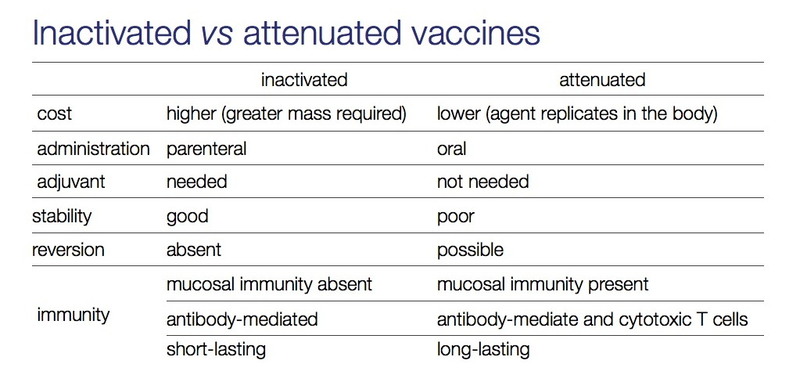FA16 Immunization Module’s Updates
Live vs. Inactivated Vaccines
One of the best things about inactivated vaccines is that they can easily be given to individuals that are immunocompromised, whereas attenuated vaccinations cannot. Inactivated vaccinations have been produced through the distruction of the disease-causing agent through chemicals or physical means. Live vaccinations are grown under abnormal conditions to select for a weakened form of the virulent.
Although inactivated vaccinations are typically more stable than their live counterpart, they also tend to require more boosters.
http://nfs.unipv.it/nfs/minf/dispense/immunology/lectures/files/vaccines.html



It is interesting to see the cost/benefit analysis of the attenuated vs inactivated. However, having inactivated vaccines, as Kate said, is very important for immunocompromised patients, such as those with HIV/AIDS. Perhaps they would benefit if more research was put it into inactivated vaccines and how to improve their immune response.
Interesting article on the price difference between the live attenuated and the trivial inactivated influenza vaccine: https://www.ncbi.nlm.nih.gov/pubmed/18462851
Their finding was that even though the inactivated cost $7.72 more per vaccinated child when compared to the live, the inactivated vaccine was not as effective. The reduced efficacy of the inactive vaccine lead to it costing $45.80 more per vaccinated child than the live vaccine, when taking into account both direct and indirect costs of contracting influenza (e.g. healthcare use costs)
So even though one might be more economical to produce, it doesn't mean it will be the best option or even lead to the most fiscal decision in the end.